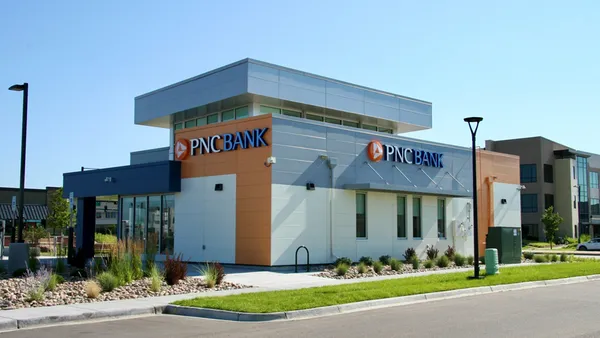Dive Brief:
- Banks expect to tighten credit standards for all types of loans during the rest of 2023, the Federal Reserve said Monday, noting that stresses in the banking system beginning in March prompted lenders to sharpen credit terms during the first quarter. Demand for loans fell during the period.
- Looking ahead to “the remainder of 2023, banks reported expecting to tighten standards across all loan categories,” the Fed said in a report on its quarterly Senior Loan Officer Opinion Survey.
- When explaining the reasoning behind plans to pull back credit, “banks most frequently cited an expected deterioration in the credit quality of their loan portfolios and in customers' collateral values, a reduction in risk tolerance and concerns about bank funding costs, bank liquidity position and deposit outflows,” the central bank said.
Dive Insight:
Fed Chair Jerome Powell and other policymakers have warned the failure of Silicon Valley Bank and other lenders since March will likely intensify a broad pullback in lending that started last year.
“I’m certainly getting vibes as you are in the market and in the business context that the credit crunch, or at least a credit squeeze, is beginning,” Chicago Fed President Austan Goolsbee said Monday.
Referring to his fellow policymakers, Goolsbee told Yahoo! Finance, “we had yet to see that tightening really bite on the real side of the economy” on Wednesday when unanimously approving a quarter-point increase in borrowing costs in the 10th consecutive rate hike since March 2022.
Powell, in comments echoed by Goolsbee, said Wednesday that the central bank is trying to gauge the severity of the credit tightening and how much it will reinforce Fed efforts to slow inflation in the most aggressive monetary policy tightening in 40 years.
“We have to be honest and humble about our ability to make a precise assessment” of the impact from declining bank credit, Powell said during a press conference.
“In principle, we won't have to raise rates quite as high as we would have had this not happened,” he said, noting especially a reduction in credit by small and medium-sized banks. “The extent of that is so hard to predict because we don't know how persistent these effects will be.”
Large U.S. and foreign banks, when explaining why they raised credit standards across all loan categories during the first quarter, “cited a less favorable or more uncertain economic outlook, reduced tolerance for risk, deterioration in collateral values and concerns about banks' funding costs and liquidity positions,” the Fed said.
In commercial and industry lending during the first quarter, banks most widely reported raising costs on credit lines and premiums charged on riskier loans, as well as widening spreads on loan rates over the cost of funds, the Fed said.
Among U.S. banks, 46% said they tightened terms for C&I loans to medium and large businesses during the first quarter, an increase from 44.8% during the fourth quarter of last year, the Fed said.
“Significant net shares of banks reported having tightened the maximum size of credit lines, loan covenants and collateralization requirements to firms of all sizes,” the central bank said.
Demand fell during the first quarter for all types of business and household credit, including for commercial and industrial loans, commercial real estate, residential real estate, home equity lines of credit, and auto and consumer loans, the Fed said. Demand was “basically unchanged” for credit cards.
“The economy is likely to face further headwinds from tighter credit conditions,” Powell said Wednesday.
“Credit conditions had already been tightening over the past year or so in response to our policy actions and a softer economic outlook,” he said. “But the strains that emerged in the banking sector in early March appear to be resulting in even tighter credit conditions for households and businesses,” slowing the economy, discouraging hiring and cooling inflation.















